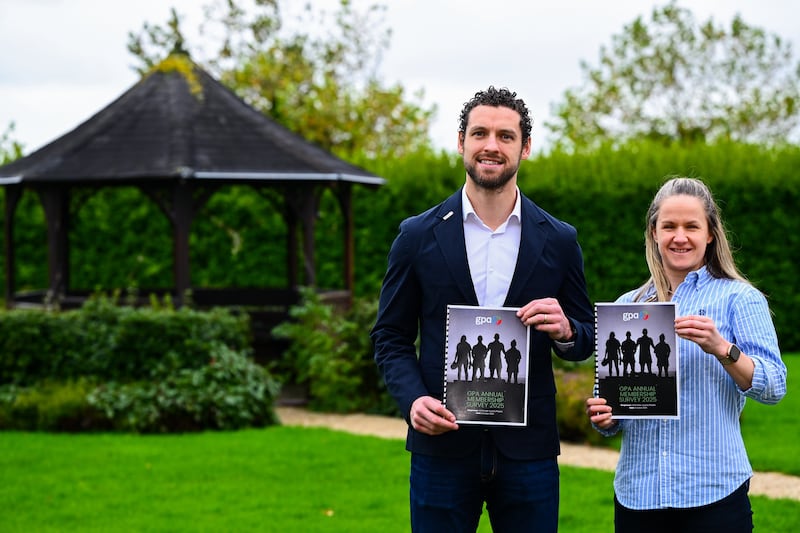My husband and I have been saving up for many years in the hope of building our dream home on a plot we purchased a couple of years ago. Our goal is to build a sustainable, efficient home that is tailored to the needs of our family of four. We’ve been researching alternatives but seem to be a bit lost with how to start and what options are even available and affordable in Ireland. What options do you think we should explore and how should we get started with the process?
A modern, fit-for-purpose, sustainable home built from natural materials with low running costs is the dream of many people today. We have all encountered so-called traditional builds that fall far short of that goal and, as a chartered building surveyor asked to carry out prepurchase inspections, I’ve encountered a plethora of shortcomings, even in brand new homes built under improved building regulation controls.
Of course, it is the goal of anyone investing in a home to ensure that it is warm, healthy and sustainable, despite the challenges that come with self-building. Although there are obstacles, it is worthwhile exploring methods that are not utilised by mainstream builders that use tried-and-tested methods of construction using masonry. However, these older methods are becoming increasingly fraught with complication as we strive to improve energy efficiency standards.
The process for many home builders begins with finding an appropriate site fitting their needs that has the potential to attain a planning grant. Sites in or close to towns and villages with zoning for residential development are increasingly expensive, while more affordable sites in open countryside may come with a “locals” restriction. Therefore, ensuring as much as possible that a site will secure planning must be a prerequisite before purchasing one.
RM Block
It’s important to note from a sustainability perspective that sites in rural locations come with added costs such as residents having to travel to schools and shops and so on, as well as additional development costs for providing wastewater treatment, site access, electricity and water supply. Hopefully the site you have already bought will not present undue difficulties with regard to such issues.
The orientation of your site will be important from a sustainable perspective since availing of a good southerly aspect will assist with solar energy gain and improve your occupational wellbeing. A north-facing or size-limited site might be more challenging.
I assume you have finance in place. If borrowing, check with a lender if they have any restrictions on build methods and also that their requisite insurance is not limited to sometimes unsustainable traditional methods using masonry.
The planning process in itself will not limit your build method but will constrain the size, shape and position of your build, as well as its external appearance, also ensuring that factors such as wastewater and road access are properly considered.
While the help offered by well-meaning family or friends can be useful – as well as cost-effective – be careful
You normally will need an appropriate professional to design the house and site layout before lodging a planning application along with a wastewater assessor if a public sewer is not available.
Of course, you could do this step yourself, but care and time will be needed and generally, unless you possess the skills yourself, I don’t advise this in order to avoid potential pitfalls.
Planning regulations have recently been revised and at time of writing are about to come into law. Although they have streamlined older sets of legislation, the new regulations still run to more than 750 pages of highly technical and complex detail, so I don’t recommend tackling this yourself.
The next step is building regulations approval on foot of a commencement notice. (See nbco.localgov.ie.) This will require details of your proposed build method with provisions you intend for limiting energy losses. It also requires a target Ber and an energy assessment by an SEAI-registered assessor, who will target the requirements for energy efficiency.
Increasingly building control are sceptical about alternative methods of construction such as straw panel or systems that don’t employ an outer skin of blockwork, so truly sustainable building methods are becoming more difficult to prove at the required validation stage, even when going the so-called opt-out route.
Because you will be investing what is probably the biggest outlay for many families, it is important that the longevity and safety of the build method is fully considered. Just a note of caution here, as there have been many instances when build methods that seemed like a good idea at the time have failed, sometimes with catastrophic results. This is why building regulations came into force to ensure the build will be safe and secure using tried and tested methods.
[ Could modular homes be an answer to the housing crisis?Opens in new window ]
Therefore, when considering your build, look to systems or methods that have a comprehensive set of certifications such as an Irish National Technical Approval (NTA) a European Technical Approval (ETA) or National Standards Authority of Ireland (NSAI), since each of these will help ensure the method you use is properly assessed and hence provide assurance at the building commencement stage.
Modern methods of construction (MMC) are increasingly attractive since builders are in short supply and the controls inherent in a factory build raise standards, ensure building regulation compliance and can be more economic, especially in our variable weather. Choosing a manufacturer that has all the certifications in place will be important but also will usually assist you with design and the targets of sustainability you seek. However, be aware that there are many providers who fall short of the requirements.
[ Modular housing that’s ‘as good if not better than traditionally built homes’Opens in new window ]
Many starting out on the self-build route have relations or acquaintances in the trades who offer to assist. While the help offered by well-meaning family or friends can be useful – as well as cost-effective – be careful, as they may not fully appreciate the overall picture of what you are trying to achieve or have the required skills to assist you. In those circumstances, I would strongly advise you to draw up a detailed plan outlining their role and requirements.

How does Ireland fix its dysfunctional rental sector?
For that reason – as well as many of the points made above – I would strongly advise you to appoint an appropriate professional who has the skills and experience to oversee the project. Given your requirements, they should be able to manage a number of sub-projects or work packages and also have the ability to look beyond mainstream building methods and towards appropriate systems that work for you, that are healthy, safe, economic and sustainable.
The cost of hiring such a professional might seem counter intuitive to your situation, but in the long term you will end up with an overall better result, save money and have long-term peace of mind.
Fergus Merriman is a chartered building surveyor and a member of the Society of Chartered Surveyors Ireland
Do you have a query? Email propertyquestions@irishtimes.com
This column is a readers’ service. The content of the Property Clinic is provided for general information only. It is not intended as advice on which readers should rely. Professional or specialist advice should be obtained before persons take or refrain from any action on the basis of the content. The Irish Times and it contributors will not be liable for any loss or damage arising from reliance on any content




















